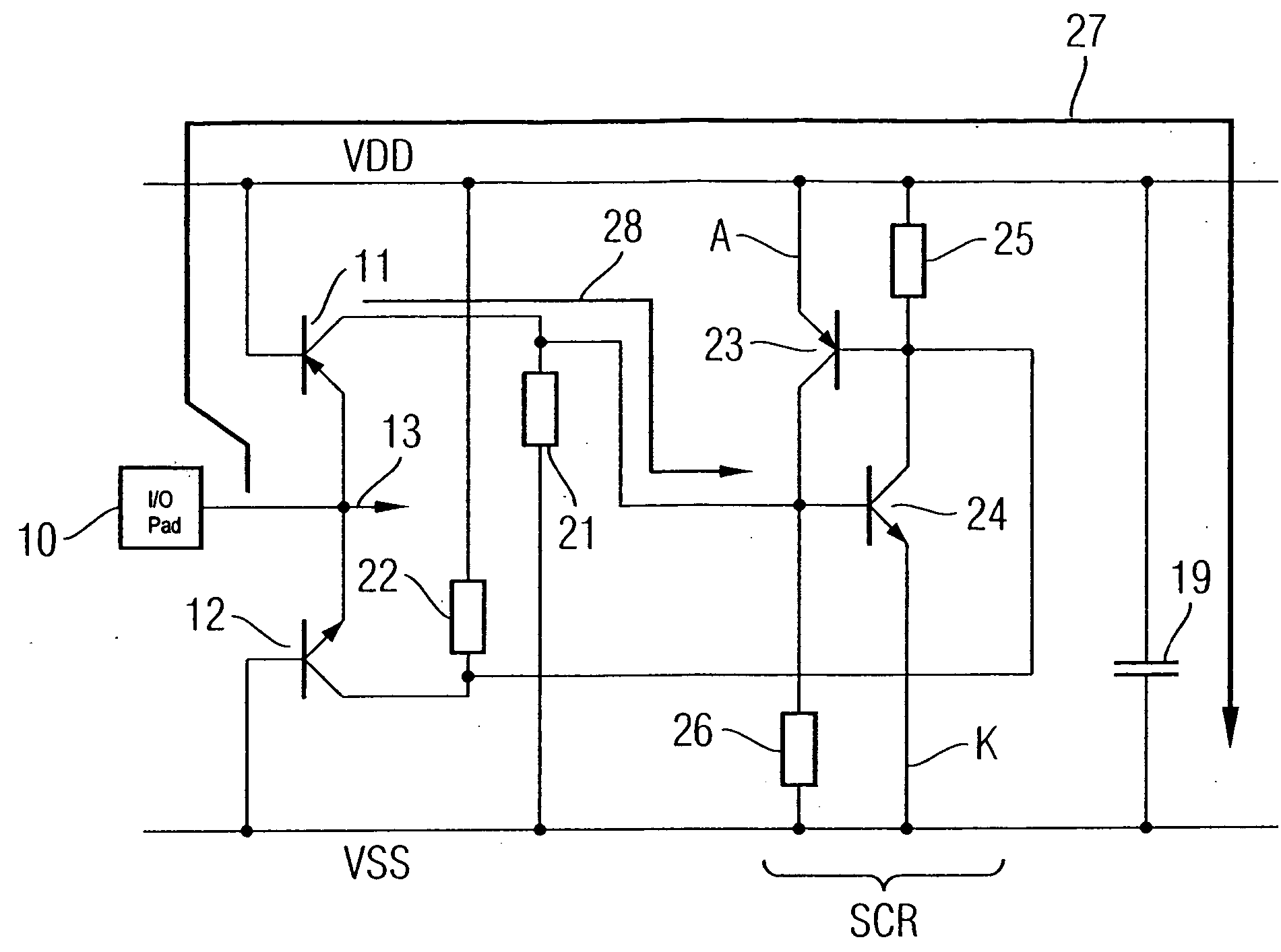ESD protective circuit with collector-current-controlled triggering for a monolithically integrated circuit
a monolithic integrated circuit and collector current technology, applied in the direction of emergency protective circuit arrangement, transistor, etc., can solve the problems of leakage current via the trigger circuit, clamp triggering, gate oxide or diffusion layer damage of i/o transistors, etc., to avoid leakage current or inadvertent triggering, and prevent damage to the circuit to be protected.
- Summary
- Abstract
- Description
- Claims
- Application Information
AI Technical Summary
Benefits of technology
Problems solved by technology
Method used
Image
Examples
Embodiment Construction
[0048]FIG. 2 illustrates an ESD protective circuit according to one embodiment of the invention. One difference from the ESD protective circuit shown in FIG. 1 is that the diodes 1 and 2 are in the form of base-emitter diodes of two bipolar transistor structures 11 and 12. The pnp transistor structure 11 is in this case electrically connected on the emitter side to the I / O pad 10 to be protected, and on the base side to the VDD network. The npn transistor structure 12 is analogously connected on the emitter side to the pad 10 to be protected, and on the base side to the supply network VSS. The collectors of the pnp transistor structure and of the npn transistor structure are connected to an optional unit 14, which converts the collector current signals to voltage signals, combines them and optionally amplifies them. The unit 14 drives a power clamp element 17 via the signal 18. Furthermore, a coupling capacitance 19 is connected between the supply networks VDD and VSS, which, by way...
PUM
 Login to View More
Login to View More Abstract
Description
Claims
Application Information
 Login to View More
Login to View More - R&D
- Intellectual Property
- Life Sciences
- Materials
- Tech Scout
- Unparalleled Data Quality
- Higher Quality Content
- 60% Fewer Hallucinations
Browse by: Latest US Patents, China's latest patents, Technical Efficacy Thesaurus, Application Domain, Technology Topic, Popular Technical Reports.
© 2025 PatSnap. All rights reserved.Legal|Privacy policy|Modern Slavery Act Transparency Statement|Sitemap|About US| Contact US: help@patsnap.com



